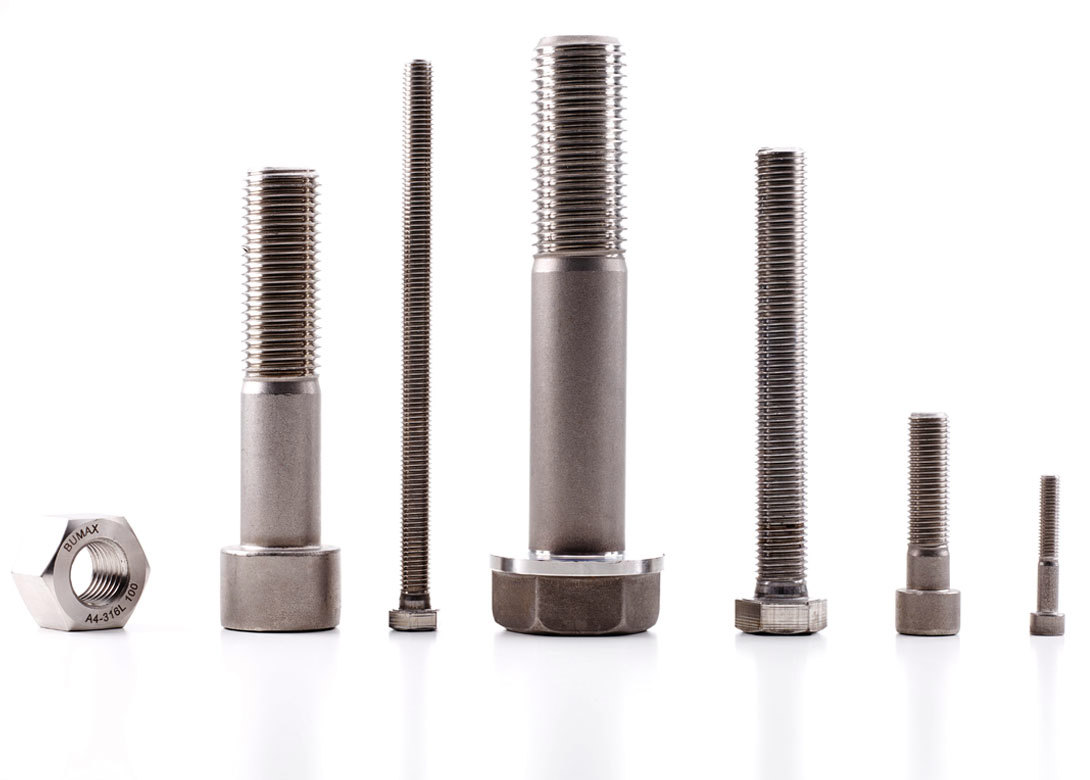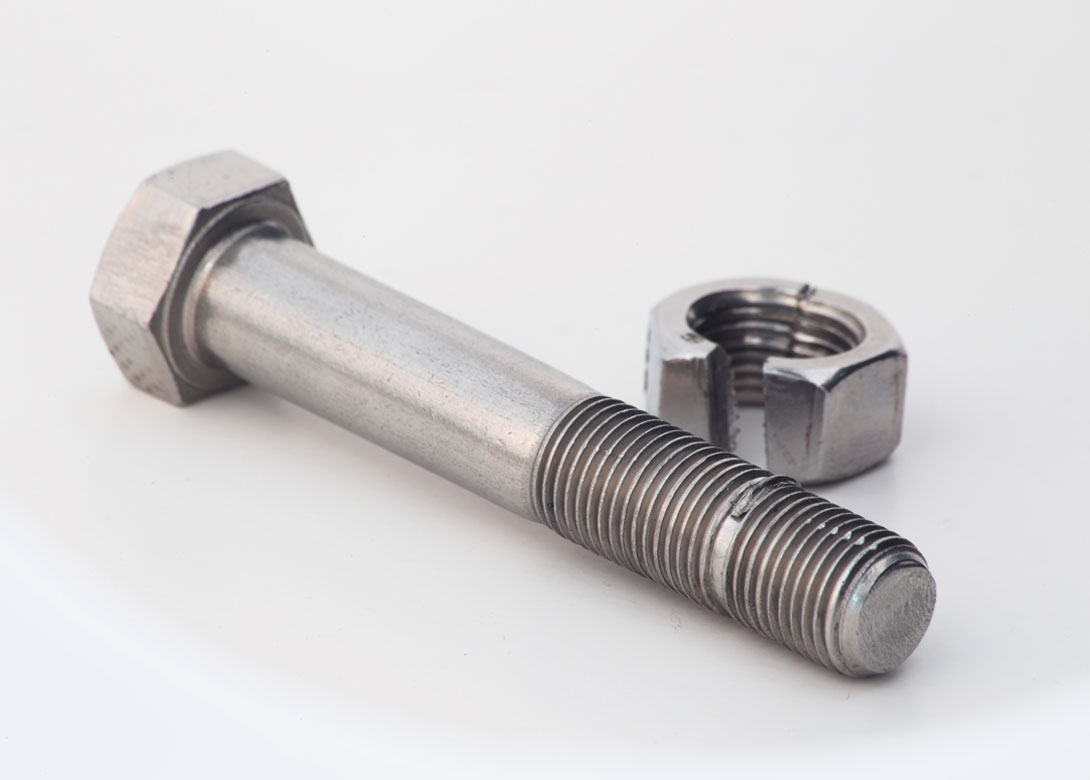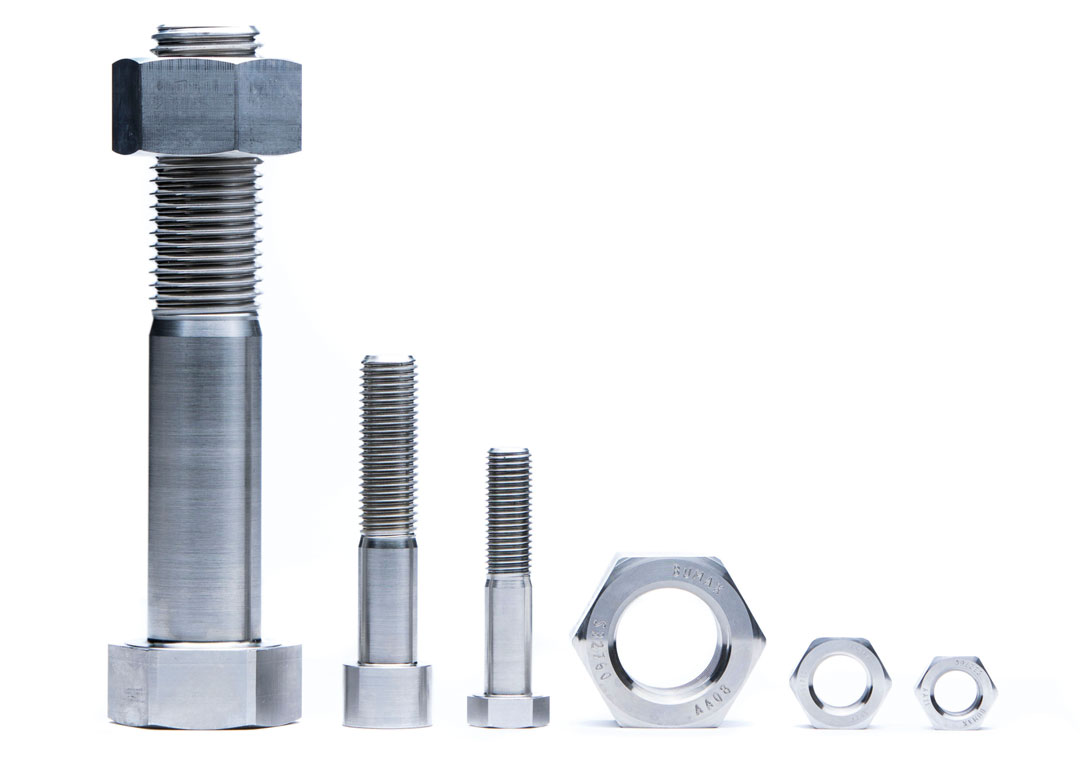
By Anders Söderman, technical director, Bumax AB
Galling is a common issue with standard stainless steel bolts and can pose serious problems for critical fastener applications. However, galling can be overcome even in the most challenging of applications – particularly by selecting premium quality stainless steel fasteners.
What is galling?
Galling is a form of adhesive wear caused by excessive friction between two moving surfaces. The process involves material being torn up and transferred between the two surfaces, when they are under sufficient load, that compress the surfaces together.
Standard stainless steel fasteners are prone to galling
Standard stainless steels have a tendency to gall under certain conditions due to their properties. Thread galling can occur with standard fasteners when pressure and friction cause the bolt threads to seize to the threads of a nut or tapped hole. Severe galling, known as ‘cold welding’, can cause the two surfaces to fuse together, which makes the joint impossible to be removed without cutting the bolt or splitting the nut.
The potentially disastrous implications of galling
The consequences and implications of galling should not be underestimated. A galled fastener may not be able to achieve the necessary pre-load – especially in case of dynamic loading.
Imagine critical fasteners in the rotating parts of a chemical pump or propeller galling. The joint is likely to be subject to a fatigue breakage, which will at least require costly maintenance and downtime for the customer or end user. However, in the worst case scenario, the fatigue breakage of critical fasteners can have serious safety implications that might result in accident or injury. Galled fasteners are also much more susceptible to corrosion, which can ultimately result in breakages.

How can galling be prevented?
Stainless steel fasteners offer several properties that are essential in many critical fastener applications, such as corrosion resistance. Despite the galling tendency of standard stainless steel fasteners, the good news is that galling can be avoided by selecting premium fasteners and taking preventative measures.
It is important to consider how galling can be avoided from the outset when designing a particular fastener application in order to avoid a great deal of rework, maintenance and costs further down the line. The following advice can help solve galling issues:
- Correct material selection: Selecting the correct material for your specific application is extremely important as certain types of stainless steel are more prone to galling due to their passive chromium oxide layer and alloying elements. For example, fully hardened steel is much more resistant to galling than annealed (softened) steel. In particular, strain-hardened stainless steels that have been cold formed provide excellent galling resistance due to their improved strength and reduced ductility.
- Choose premium fasteners: As galling is common between metal surfaces in sliding contact with each other, premium fasteners that are designed to perfectly fit together can significantly reduce the risk of galling, as they minimise movement and friction. Here, high-quality threads with less surface deviations that can rub together and avoid galling issues are essential. For example, thread rolling is a premium fastener manufacturing technique that ensures greater hardness, and a higher quality and smoother thread compared with cut threads. Good quality threads with no sharp thread crest or surface defects are extremely important when producing fasteners that are far less susceptible to galling.
- Lubrication: This can reduce galling by allowing the two materials to slide past each other without causing friction. Some leading premium fastener manufacturers use custom-made wax to provide a friction coefficient of 0.10 – 0.12, which enables accurate torque calculations. Anti-seizing and anti-galling lubricants can also help reduce galling.
- Don’t use damaged fasteners: A bolt with dented or damaged threads has a significantly increased chance of galling. Check all fasteners for damage that may have occurred during shipping. Dirty bolts with debris in the threads can also greatly increase the risk of galling – so make sure you only use clean bolts.
- Careful installation: As the stainless steel passive chromium oxide layer can be damaged by high temperature and pressure, tightening bolts more slowly can reduce friction and heat that can cause galling. This may involve avoiding the use of power tools that can cause excessive friction and heat. Calculations should be made for particular applications to determine the kind of tools that can be used.

Overcoming severe galling in Japan
NARA Machinery recently invested in premium stainless steel fasteners for its powder handling machines to successfully overcome severe galling issues with standard fasteners.
The Japanese company NARA Machinery manufactures powder handling machines for various industrial customers around the world. Many of the machines require a high degree of air tightness with firmly tightened stainless steel screws. However, as screws that have powder contact cannot be lubricated, they are highly susceptible to thread galling issues.
“We previously used standard 304 and 316 stainless steel screws for all our machines, but our customers experienced galling and gorging issues with these screws,” explains Kenichi Johara, technical director at NARA Machinery. “The screws also had air leakage issues and required frequent removal for cleaning and maintenance purposes.”
Such issues and maintenance needs resulted in costly procedures and downtime for NARA Machinery’s industrial customers. “In the worst instances, galled screws had to be cut and carefully removed and replaced to protect against dust getting into the machine,” says Johara.
Johara continues: “However, we then found BUMAX via the internet and tested installing BUMAX 88 screws on a customer machine in Japan that had experienced galling issues. Since installing BUMAX screws, the customer has not reported any issues with galling or air tightness.”
Following this successful trial, NARA Machinery has recently built a brand new machine with BUMAX 88 screws. “Going forward, we plan to use BUMAX screws for all new powder handling machines we manufacture that require air tightness,” says Johara. “This will help our customers avoid the need for costly downtime due to the maintenance and replacement needs related to galling.”
The use of BUMAX 88 screws has helped NARA Manufacturing to further develop its high-quality powder handling machines. “We are very happy to have found BUMAX, and I would strongly recommend BUMAX products to other companies that experience similar galling issues,” concludes Johara.
About the author
Anders has worked in the stainless steel industry since 1995 and has been technical director at BUMAX AB since 2013. Prior to BUMAX, Anders held various positions at Sandvik Materials Technology since 1999 – including five years as strategic technology and product development manager for Sandvik Wire and Kanthal®, six years as R&D manager for wire products and three years as a research engineer within the R&D organisation. Anders has an M.Sc. in Materials Science from Dalarna University.

Biog
Will joined Fastener + Fixing Magazine in 2007 and over the last 15 years has experienced every facet of the fastener sector - interviewing key figures within the industry and visiting leading companies and exhibitions around the globe.
Will manages the content strategy across all platforms and is the guardian for the high editorial standards that the Magazine is renowned.






